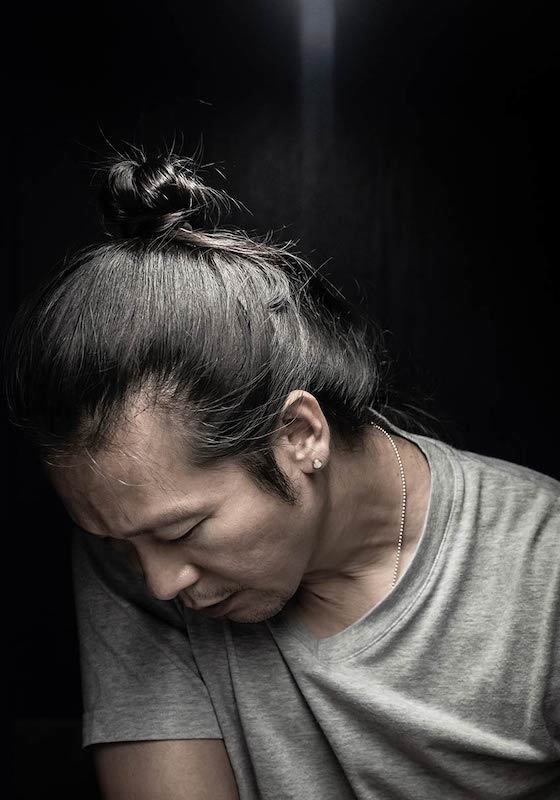Paying homage to Singapore’s pioneers
A photographer’s exhibition shines the light on a hard-working generation that made Singapore what it is today.
BY: Eleanor Yap
Alan Lim may have grown up in the 70s and 80s, but he can still recollect Singapore’s pioneers working hard. He shared of the workers laboriously grinding tofu with a traditional stone wheel at his grandfather’s shophouse at Waterloo Street, and his father who started his day at 1am lifting and butchering meat in a Toa Payoh wet market.
“While the contributions of politicians and business leaders are well-documented and celebrated, success would not have been possible if not for the legions of everyday workers who toiled behind the scenes,” said the 45-year-old. “Their stories were never recorded on paper. The only tell-tale signs now are etched on their weathered faces and hands.”
He is making amends to this and celebrating these pioneers in a black-and-white photo exhibition called “Tell-Tale Lines”. He explained that the exhibition not only “shines the light on the wrinkled faces and hands of Singapore’s pioneers” but also allows them to tell their stories in a personal and honest way. The exhibition was first shown at The Substation for two weeks in 2016 and then in that same year, it travelled to the German Centre Singapore for about five months. This year, the exhibition is being held at The Hive Lavender as a collaboration between The Hive and the School of Photography Singapore (SOPS), which was founded by Alan. He shared that if someone wishes to host it, he is more than happy to have the same exhibition again.
The exhibition, which took him a month to shoot, has about 10 to 14 photos of seniors aged 70 to 90s. These seniors are from the senior community, as well as a friend’s relative. The oldest of the pictures is that of Mow Ah Chong, who was born in 1924, and hailed from Dongguan district in Guangdong province, China. Alan shared, “She arrived in Singapore in her early 20s and made a living as a farmer, selling vegetables from her farm in Potong Pasir to the local markets. Farming life was arduous. She recalled a flood in her area which killed three people. She retired after 30 years to stay at home to care for her family.”
Also, in the photo exhibition is a picture of Alan’s father, Lim Kia Chye, who was born in 1941. Alan shared that his father started selling pork illegally from a street-side stall made by himself at the age of 19. “When officials came to raid, he hid the pork in the back lane. He would ride a bicycle for an hour just to buy a piece of ice to keep the unsold pork for the next day. When he obtained a licence, he moved to a wet market in Toa Payoh,” he said.
“Waking up at 1am in the wee hours to start his day was a norm back then. As he slept so little that he often felt sleepy at work, coffee was the main source to keep him up. One day he dozed off while butchering meat and that cost him a deep scar in his left hand which still can be seen today. He also took over a friend’s failed chicken rice business in a coffee shop in Toa Payoh Central, and eventually turned it around. After working for over 50 years, he became semi-retired and passed down the business to his sons. He still owns the pork stall in the wet market till today.”
Besides his father, he also shared another pioneer’s story: “Ng Ee Bak, born in 1927, came to Singapore from Malaysia to escape the Japanese during WWII at the age of 10. Later he realised he only escaped to Singapore where the Japanese soldiers were coming. He made a living as a fisherman when he first arrived in Singapore. Later he worked in construction for 60 years during the time when public housing was being developed. Once in his 60s, he fell from the third floor of a construction site but miraculously he was unharmed and he continued his work. After working in construction, he decided to be a hawker selling noodles.”
Emphasised Alan: “Life was unimaginable tougher and people were also hardier back then. They worked extremely harder and longer hours to save for their future generations, and they had very little or no lifestyle at all.” He hopes his photo exhibition will serve as “a reminder of our past and an appreciation of how we got here today, and respect everyone regardless of position, status and age”.
** Those interested in viewing the photo exhibition can do so on February 25 to March 8, from 5pm to 8pm at The Hive Lavender. The exhibition is closed on weekends.
(** PHOTO CREDITS: Alan Lim)



0 Comments